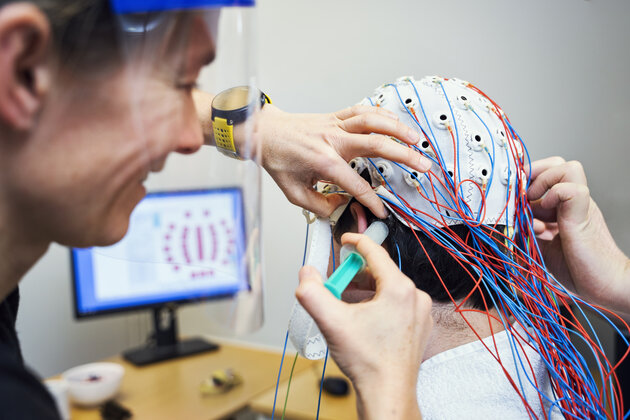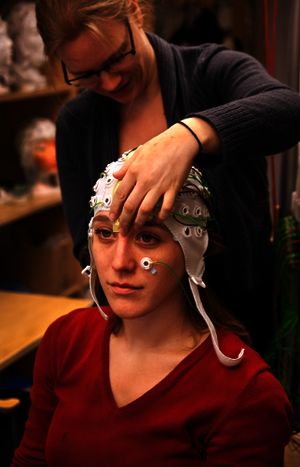EEG

What is EEG?
Electroencephalography (EEG) is a non-invasive neuroimaging technique that measures the brain waves or the electrical activity in the cortex via small metal discs or electrodes placed on the surface of the scalp. The electrodes pick up the electrical activity and send the signal to the amplifier, the amplifier boosts the signal and the voltage changes in the signal are then registered. The advantage with this method is its high temporal resolution down to milliseconds.
EEG is utilized in both clinical and non-clinical settings. For clinical purposes, EEG is used to detect normal or abnormal brain activity, for instance for detecting epilepsy, brain injuries or sleep disorders. For non-clinical purposes, EEG is often used to investigate the neural mechanisms underlying cognitive processes in real time. The EEG signal is rich with information and can be analyzed in different ways. One of the most common ways to extract information from the EEG signal is through event-related potentials (ERPs).
What are ERPs?
When EEG is time-locked to the onset of an event (a stimulus such as image, sound, word, etc.), we get event-related potentials or ERPs. The potential shifts in the ERPs are called components (e.g., P1, MMN, N400) and these shifts can be analyzed for amplitude, latency, polarity (positive or negative going deflection), and scalp distribution. Since the EEG signal is sensitive to various kinds of noise, we need to average over many trials to cancel out the noise and isolate reliable potential shifts that are driven by the desired manipulations in the stimuli.
The benefits of ERPs compared to behavioral measures are that they have excellent temporal resolution (in milliseconds) and that they do not require a behavioral response, and can therefore be used for participant groups where a behavioral response is difficult to record (e.g., in young children). In addition, ERPs can be measured to very specific stimuli e.g., specific words in sentences instead of at the end of the sentence as is the case for behavioral reaction time studies. In other words, ERPs are a powerful research tool as they measure the brain’s processing of the stimuli as it occurs on a millisecond by millisecond basis.
Contact: eeg@humlab.lu.se

